Giant knotweed leaves and stems
Image credit: Sigrid Resh
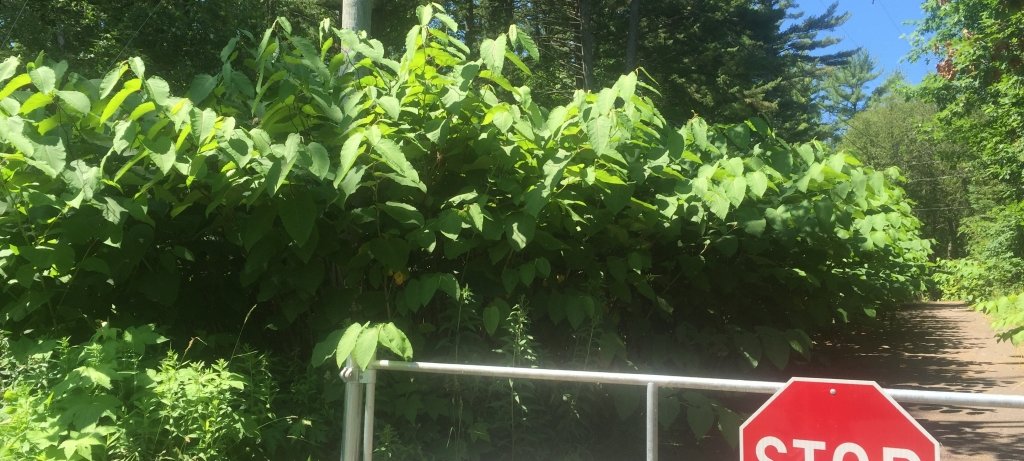
Giant knotweed leaves and stems
Image credit: Sigrid Resh
Giant knotweed, a terrestrial herbaceous plant in the Polygonaceae family, invades along waterways, roads, forest openings, and disturbed sites where dumped. Key characteristics of this invasive species include:
Note: Can hybridize with Japanese knotweed and produce a species called Bohemian knotweed.
For more information visit Midwest Invasive Species Information Network (MISIN).
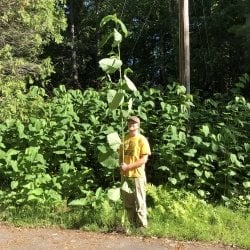
Tall stem of giant knotweed
Image credit: Sigrid Resh
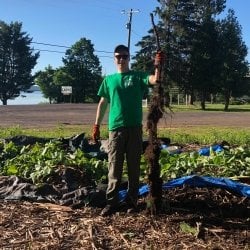
Root segment of giant knotweed
Image credit: Sigrid Resh
Manual Knotweed Management in 5 Easy Steps
Giant knotweed is very difficult to remove from an area after it has been introduced because of how aggressive it is. It’s able to spread through rhizomes and stem/root fragments, as well as seed production. Make sure to remove all plant material to prevent re-rooting. KISMA has been managing a half-acre knotweed area along the Portage trail and at the Quilt House for the past four years with very positive results (see images below).
Note: The purpose of this removal strategy is to starve the rhizome system of any carbohydrates that would be gained through photosynthesis and will require multiple years of surveillance and removal of plant material to be successful.
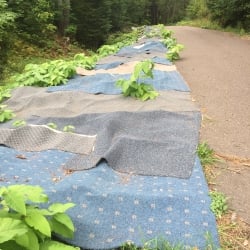
Use of carpet to cover knotweed with re-sprouts that need to be cut
Image credit: Sigrid Resh
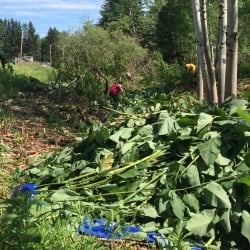
Giant knotweed piled on tarp
Image credit: Sigrid Resh
Popular alternatives to giant knotweed include native dogwoods, like red-osier dogwood (Cornus sericea) and flowering dogwood (Cornus florida), since they are beautiful and provide for native pollinators and other native wildlife. Also, understory plants like native ferns, bushes, and trees are great alternatives because they fill up space knotweed could use to spread while also providing for native wildlife.